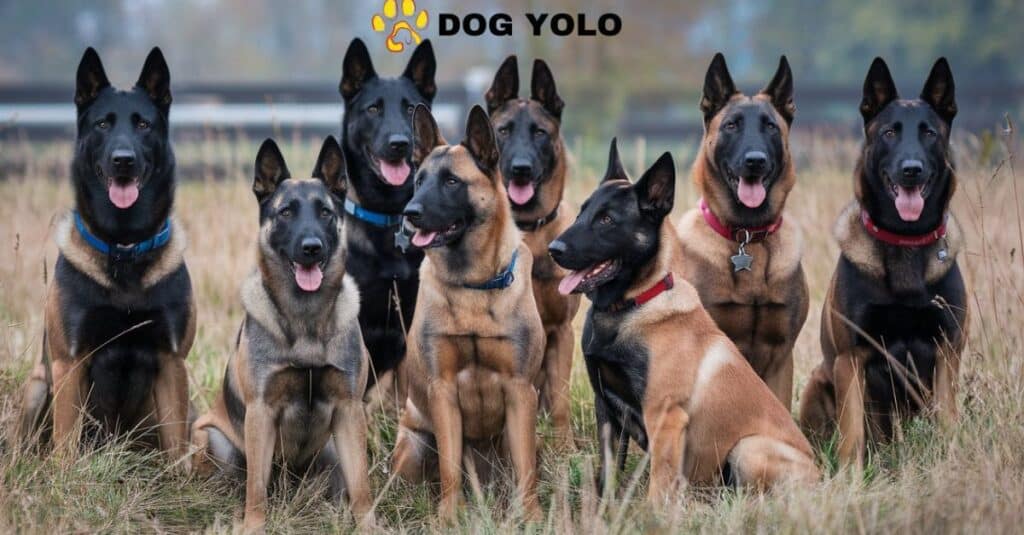Belgian Malinois are one of the most versatile and intelligent dog breeds, revered for their work in various fields, including police and military work, search and rescue, and as loyal companions.
One fascinating aspect of this breed is the Belgian Malinois colors, which showcase a beautiful variety of coat patterns and colors.
In this blog post, we’ll explore the eight primary coat colors of the Belgian Malinois, delve into their unique traits, and explain the underlying color genetics. Let’s dive into the vibrant world of Belgian Malinois colors!
Overview of the Belgian Malinois Breed
The Belgian Malinois is a medium-sized working dog that hails from Belgium. Known for their agility, intelligence, and strong work ethic, they excel in various roles.
The breed is often confused with the Belgian Tervuren, Belgian Laekenois, and Belgian Sheepdog, but the Malinois stands out with its distinct sable pattern and overall demeanor.
Coat Colors and Variations
Belgian Malinois colors can vary significantly due to genetic factors. The breed standard, as defined by the American Kennel Club (AKC), recognizes specific colors while also acknowledging nonstandard colors that occasionally appear.
Sable Belgian Malinois
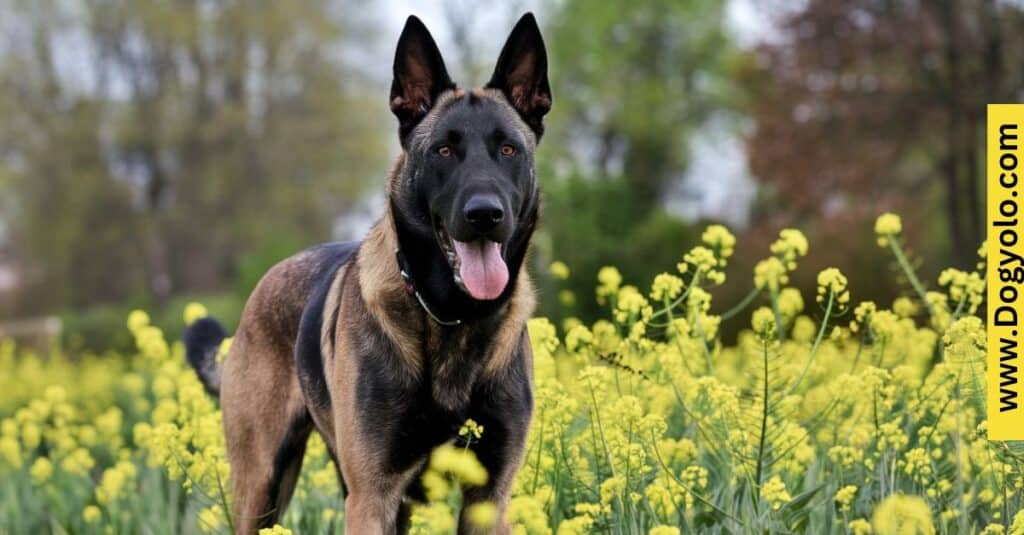
The sable pattern is perhaps the most recognized among Belgian Malinois colors.
What is a Sable Coat?
A sable coat features a mix of black-tipped hairs that can blend with various base colors, creating a stunning visual effect.
Sable coats can range from a light fawn to a darker brown, with the common characteristic of dark tips on the hairs.
Color Range in Sable Malinois
- Fawn Sable: Light sable with a fawn base.
- Dark Sable: Deep brown with pronounced black tips.
Genetic Influence
The sable coat is influenced by dominant genes. Specifically, the presence of the “Ay” allele, which produces the characteristic black-tipped hairs. This genetic marker is crucial for identifying sable Malinois.
Variants of Sable
- Clear Sable: Shows less shading, with more uniform color.
- Shaded Sable: Features more pronounced black shading along the back.
Read more about Cane Corso Mastiff Mix
Black Belgian Malinois
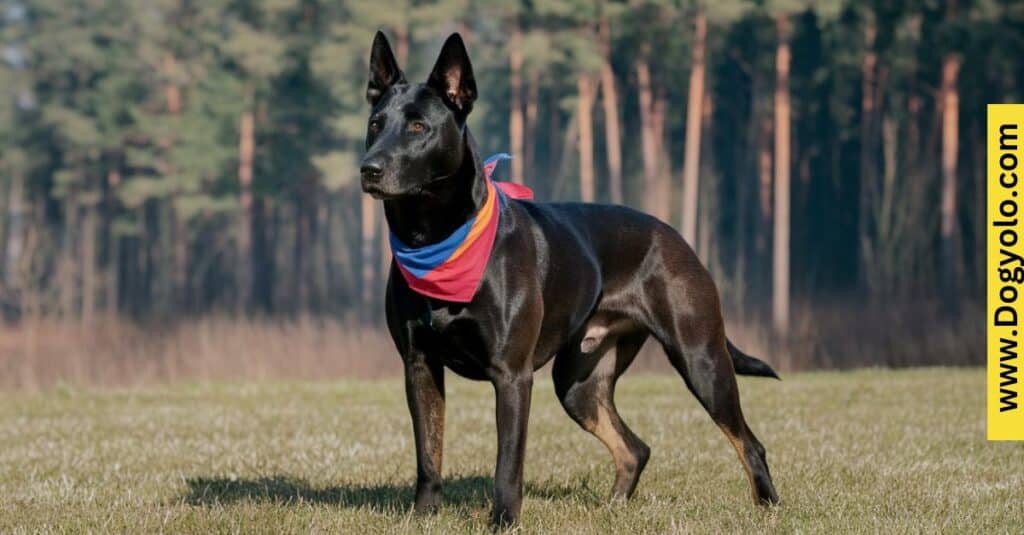
The black Belgian Malinois is another captivating color, often associated with elegance and strength.
Solid Black vs. Shaded Black
Solid black Malinois feature a completely black coat, while shaded black Malinois display varying degrees of black overlay over a different base color.
The latter can often appear to have a rich depth due to the underlying colors shining through.
How Rare is the Black Malinois?
While black Malinois are less common than their sable counterparts, they do occur and are recognized in the breed standard. According to recent surveys, around 5% of Belgian Malinois may exhibit a solid black coat.
Genetic Factors Behind Black Coats
The black coat results from a recessive allele that impacts the eumelanin pigment, giving rise to the rich, dark fur characteristic of this variant.
Read more about The Cane Corso Pitbull Mix
Blue Belgian Malinois
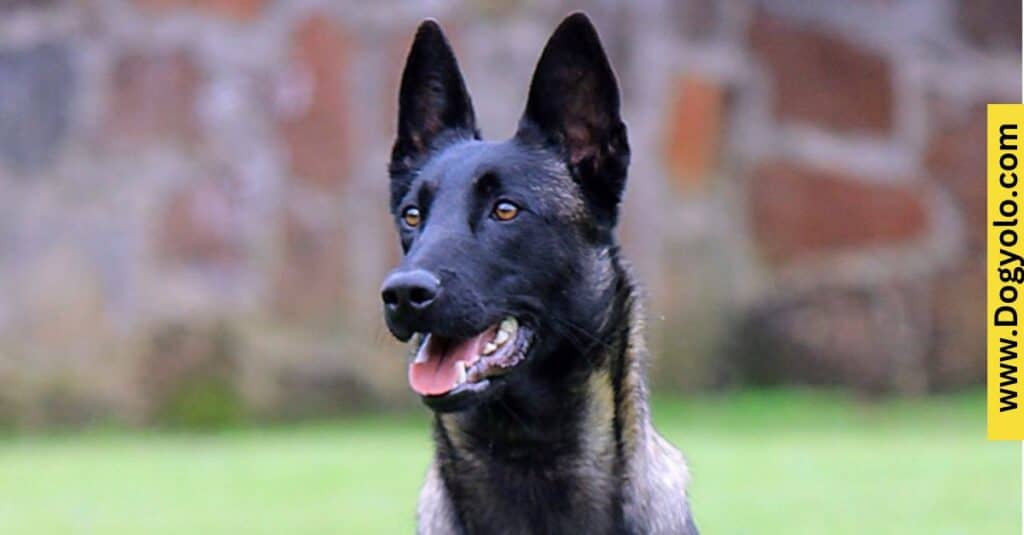
The blue Belgian Malinois is a striking color that often captures the attention of dog enthusiasts.
What Causes the Blue Color?
Blue Malinois have a diluted form of eumelanin, which leads to their unique grayish-blue appearance. This color is not as common as sable or black but holds a special place in the hearts of many.
Genetic Dilution
The dilution gene, which impacts the expression of color in many breeds, plays a significant role in the appearance of blue coats.
This genetic trait is a recessive factor, making blue Malinois a rare find, with estimates suggesting that only 1-2% of the breed showcases this coloring.
Are Blue Malinois Less Common?
Yes, due to the recessive nature of the dilution gene, blue Belgian Malinois are significantly rarer compared to the standard sable and black variations.
Read more about The Truth Behind Warlock Dobermans
Liver Belgian Malinois

The liver Belgian Malinois is another fascinating color that’s often overlooked.
What is a Liver Coat?
Liver Malinois display a reddish-brown hue that can range from light to dark. This color variation stems from the same recessive genes that produce liver coats in other breeds.
The Recessive Gene Effect
The liver coloration is caused by a recessive allele, which can result in some health concerns associated with rare coat colors.
Health Concerns?
Research has shown that while liver Malinois are generally healthy, they may face increased risks for certain genetic conditions related to their unique pigmentation. Regular health checks are advisable for owners of this color variant.
Read more about 7 Labrador Retriever Colors
Brindle Belgian Malinois
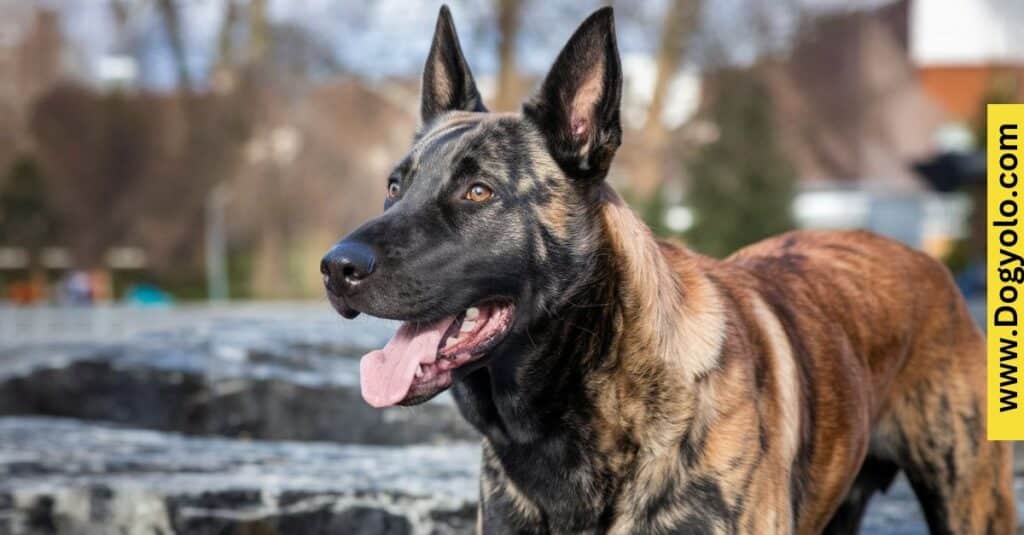
The brindle Belgian Malinois is visually striking with its unique coat markings.
Brindle Patterns
Brindle coats consist of a mix of colors, often appearing in stripes or spots. This pattern is less common in Malinois, leading to a distinctive look that some find irresistible.
Is Brindle Accepted in Breed Standards?
While brindle is not officially recognized in the AKC breed standard, it does occur in some Malinois and can be found in other breeds, particularly in mixed-breed lines.
History and Appearance of Brindle Malinois
Brindle markings can sometimes be traced back to the dog’s ancestry and cross-breeding with other breeds. This unique coloration has historical significance in various working dog lines.
Read more about Blue Heeler Australian Shepherd Mix
Agouti Belgian Malinois
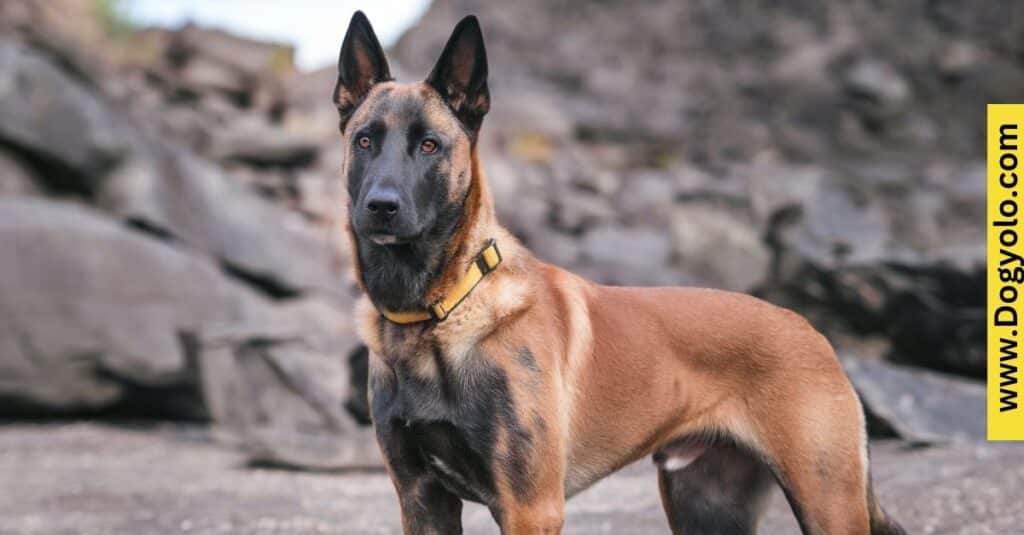
The agouti Belgian Malinois showcases a fascinating coat style that deserves attention.
What is Agouti?
Agouti coats are characterized by hairs with banding patterns of different colors, giving a unique look that can appear shaded or variegated. This pattern often resembles that of wild canines.
Where Agouti Patterns Originate
The agouti coat originates from a specific genetic marker that results in a mix of colors along the hair shaft, creating a visually complex coat.
Popularity of Agouti in Working Dogs
While agouti Malinois are not common, their working capabilities remain strong. Many of these dogs are used as security or herding dogs, showcasing that coat color does not determine functionality.
Read more about Cane Corso German Shepherd Mix
Black and Tan Belgian Malinois
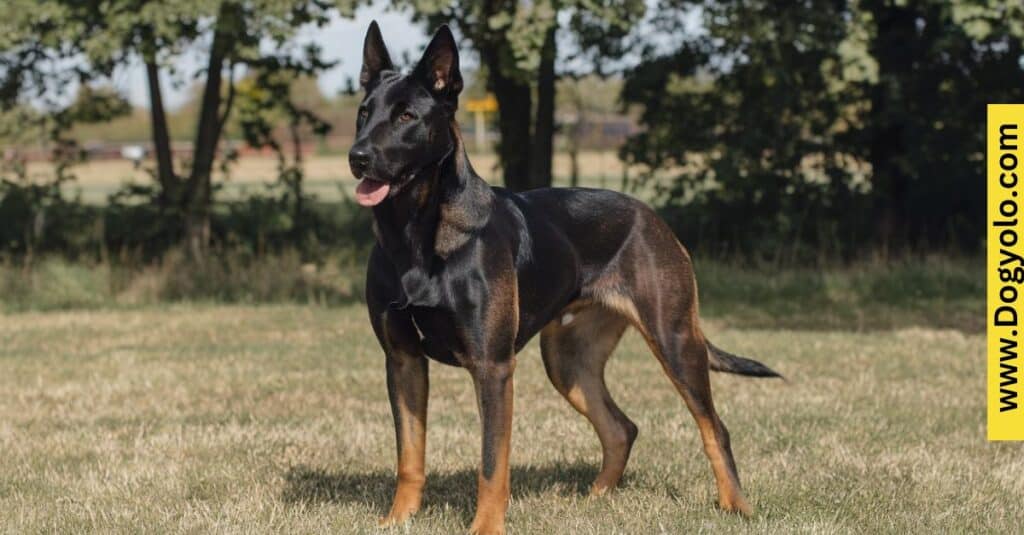
The black and tan Belgian Malinois is a distinctive color pattern reminiscent of several shepherd breeds.
What Defines Black and Tan Coloring?
Black and tan Malinois feature a combination of a dark saddle and lighter tan markings. This striking contrast makes them visually appealing and is often associated with traditional shepherds.
Commonality in the Malinois Breed
While not standard, black and tan Malinois can occur. Estimates suggest that around 5% of the breed may display this coloration, often resulting from genetic diversity in breeding practices.
Comparisons to Other Breeds
The black and tan pattern is common in other breeds, such as Rottweilers and German Shepherds, which can lead to similarities in appearance and function.
White Belgian Malinois
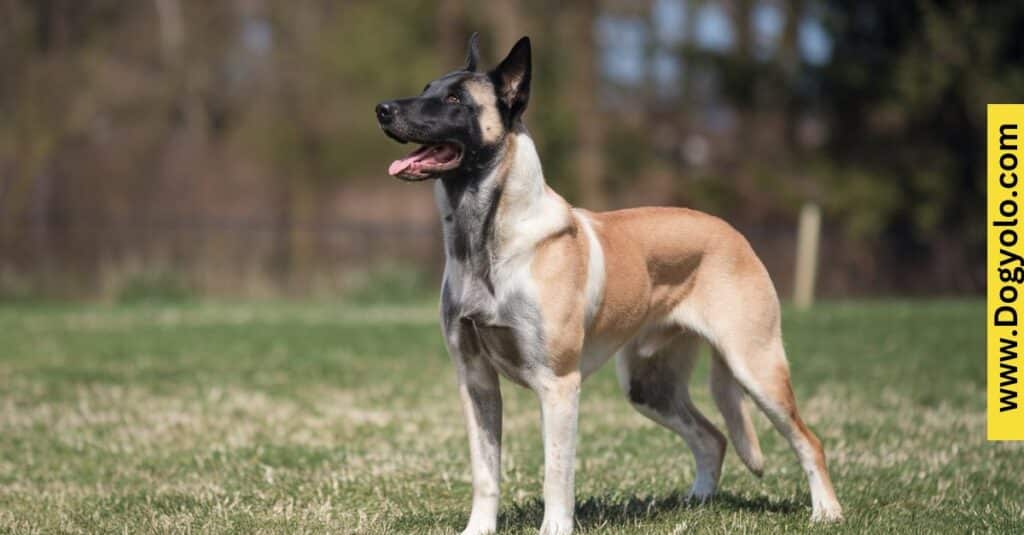
The white Belgian Malinois is a rare and intriguing variation.
The Rare White Malinois
White Malinois are not commonly recognized and often fall outside the breed standard due to their nontraditional hue. This coat can range from off-white to cream and is often confused with albinism.
Albinism vs. White Coats
It’s essential to differentiate between true albinism and a white coat. Albinism results in pink eyes and skin, while white Malinois can have standard pigmentation without the health issues associated with albinism.
Are White Belgian Malinois Healthy?
Though rare, white Belgian Malinois can be healthy. However, owners should be cautious about potential health concerns associated with pigmentation, such as hearing issues, especially in cases of true albinism.
Belgian Malinois Eye and Nose Colors
The eye and nose colors of Belgian Malinois can vary significantly, often influenced by their coat color.
Eye Color Variations
- Brown: Most common, particularly in sable and black Malinois.
- Amber: Can appear in lighter-colored coats, such as fawn or blue.
- Green: Rare and typically seen in unique genetic cases.
Nose Pigmentation
Typically, a Malinois will have a black nose. However, variations can occur based on coat color:
- Black Nose: Most standard color.
- Liver Nose: Seen in liver Malinois, reflecting their unique coat color.
- Pink Nose: Rare and usually indicates genetic anomalies.
Coat Pigmentation Science: Phaeomelanin and Eumelanin
Understanding the science behind Belgian Malinois colors requires a closer look at the pigments involved.
Explanation of Phaeomelanin
Phaeomelanin is responsible for red and yellow pigments. It plays a critical role in the appearance of lighter shades, particularly in fawn sable Malinois.
Eumelanin
Eumelanin gives rise to darker pigments, such as black and brown. The interaction between eumelanin and phaeomelanin determines the overall appearance of a dog’s coat.
Sable Shading and Extreme Black Shading
Shading plays a significant role in the appearance of many Belgian Malinois colors.
Shading in Sable Malinois
Sable Malinois can exhibit varying degrees of shading, resulting in beautiful gradients of color.
Extreme Black Shading
Extreme black shading can create a stunning visual effect, where black is dominant, leading to an almost charcoal appearance.
Black Masks on Belgian Malinois
The black mask is a distinct feature seen in many Belgian Malinois.
Significance of the Black Mask
A black mask enhances the facial features and gives the dog a fierce yet elegant appearance. This coat pattern can vary in intensity and size.
Are Black Masks Common Across All Colors?
While prevalent in sable and fawn Malinois, black masks can also appear
in other color variations, providing a unique twist to the standard color profiles.
Nonstandard Colors and Variations
While there are recognized Belgian Malinois colors, many nonstandard colors exist.
Exploring Nonstandard Colors
Nonstandard colors, such as chocolate or gray, are rare and often not accepted by the breed standard. These colors often arise due to recessive traits and mixed breeding.
Genetic Basis for Nonstandard Colors
Genetic diversity within the Malinois breed can lead to unique color combinations. These genetic markers contribute to the appearance of nontraditional hues.
Conclusion
The Belgian Malinois is not only a remarkable working dog but also a visually stunning breed with a variety of colors. Understanding the Belgian Malinois colors enhances our appreciation for this breed’s beauty and diversity.
Whether you favor the classic sable, the striking black, or the rare blue and white, each color variation carries its charm and individuality.
As we’ve explored, the color genetics of Belgian Malinois are fascinating, involving complex interactions of dominant and recessive genes.
Whether you are a seasoned dog owner or simply a fan of this breed, knowing about the different color variations adds depth to your understanding and admiration for these incredible dogs.
Embrace the beauty of Belgian Malinois, and celebrate the diversity of their colors, from the elegant sable to the rare blue and beyond!

Vala John is an experienced blogger at Dog Yolo, where she shares her deep passion for all things canine. With years of expertise in dog care, training, and lifestyle tips, Vala’s writing helps dog lovers build stronger bonds with their furry friends. Her insightful posts make her a trusted voice in the pet community, offering practical advice for dog owners of all levels.

